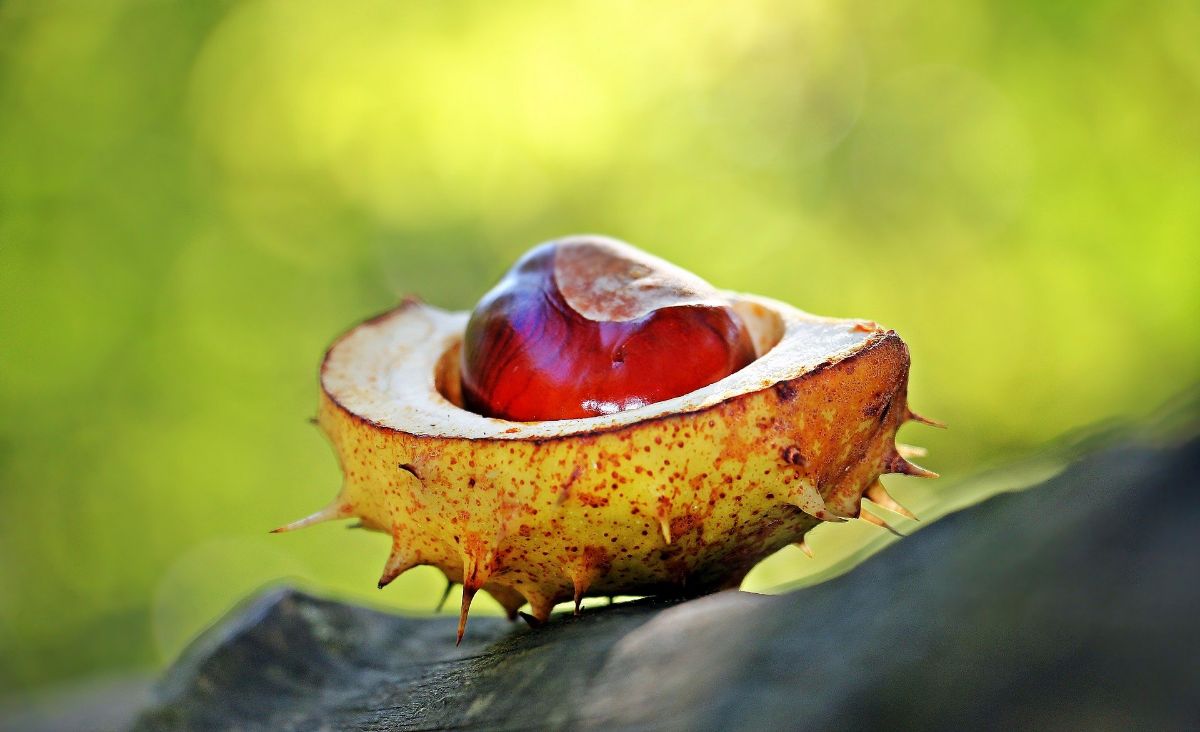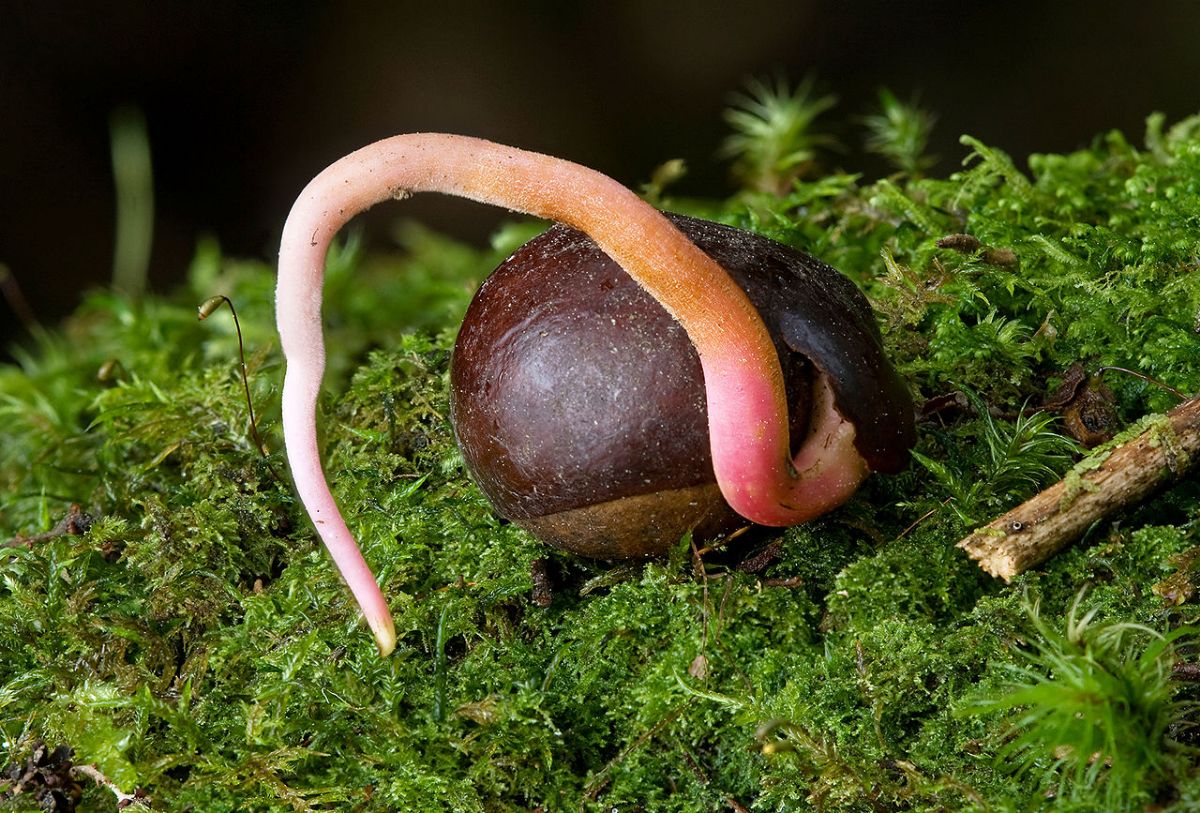
If you are a chestnut lover, you will surely look forward to the time when they hit the shops as "May water." In fact, there are many who long for that moment to enjoy them. But what if we tell you that you can germinate chestnuts at home and thus have your own tree to give you chestnuts? If you've never thought about it before, now may be the time.
And do not think that it is difficult, it is much easier than it seems, and in a matter of time you could get a tree to plant in the garden or have in a pot and decorate your house. Do you get down to work?
When to germinate chestnuts

When it comes to germinating chestnuts, you must bear in mind that you will not need much to do, neither a tool nor space. At least at the beginning. For a few weeks, or even months, it may be fine in a small pot that doesn't take up much. However, with high temperatures (we are talking about spring) then it will need you to put it in a larger pot, in the garden or in a place where you can repopulate the forest.
But when to start germinating chestnuts? It seems obvious, but the best time to germinate chestnuts is when there are chestnuts. Because it is something that is not present all year round (or at least not the autochthonous ones), you have to wait for autumn to do it because that's when chestnut trees they release the fruits and you can collect them in nature, or the ones you buy in the supermarket.
Those that you collect in nature you should know that they will not have the same appearance as those that you buy in the supermarket or in a greengrocer. These come with a spiked casing that must be opened to remove the fruit (which is what they sell in stores).
In case you use the ones from the stores, you should look at the date they were collected, since if it has been a long time since they were collected, it is likely that they will not be able to leave. And what would the limit be? Well, you must put that they have been collected the same year you want to plant them. If they are older, it is much more difficult for them to germinate and, if they do, the plant may be lacking or smaller and less productive than others. Also, you will have to rehydrate them to make it easier for them to germinate.
How to germinate chestnuts

Now that you know when to germinate chestnuts, it's time to know what process you must apply to be successful. We already told you that it is very easy, but it will require a bit of luck when choosing the fruits and also patience, because you will not get a tree overnight, not even in a week.
The first thing you need to do is select the fruits that you are going to pick. We recommend that you choose 2-3 chestnuts since you multiply the success so that some of them germinate. Whether you pick them from the forest or use the purchased ones, you need to rehydrate them. This is as simple as putting a glass of water and pouring the chestnuts into it.
If you see that any of them float, then remove it because it will mean that it will not germinate. All chestnuts, to be more likely to germinate, must be sunk in the water.
Now, you will have to wait overnight for the chestnuts to hydrate by leaving them in the water.
Once that time has passed, take out the chestnuts and, with a knife, you have to cut the tip of the chestnut, but you have to be very careful because it is at that point where the future sprout of it is, if we cut or damage it With the knife, we can have more trouble germinating chestnuts. The goal is for that part to open up a bit to help it come out faster. Therefore, you should only cut the tail and, if you can, open the shell a little around but nothing more.
You already have your chestnut ready to plant. But you need a place to do it. We recommend that you get a pot, if possible, taller than it is wide, as this ensures that it will have space to develop the roots. You have to mix substrate and worm hummus, it is the best for chestnuts and will help their germination. Another option, if you don't want to buy a deep pot, is to recycle a liter and a half bottle of water or soda or two books, cutting the neck of the bottle and poking holes in the bottom. So you will even realize how the roots grow.
Make sure the soil is very moist, since when it comes to germinating chestnuts, it needs that environment. So water abundantly at first (without the chestnut still being in the ground).
How to put the chestnut in the pot

It's time to plant chestnuts. If you have put several in water and all of them are ready to plant, we recommend that you put each one in a different pot since, if they germinate, sharing the same pot can make them lack space.
Chestnuts, if you look closely and touch, have a smooth side and a bulky side, right? Well, you have to place them on the ground in such a way that the smooth side is the one that hits the ground. In fact, you have to bury only half of the chestnut. What we are trying to do is simulate the natural habitat of a chestnut, that is, what would happen to a chestnut if it fell in the forest.
Hence burying it only in the middle, covering it with a napkin (because it needs darkness, simulating the leaves that fall on top of it) and wetting that napkin (because it is a rainy season and it must rain). Thus, you create a kind of humid "greenhouse" that will help germinate chestnuts.
After 20-30 days, if you have kept the pot moist (by watering every time you see that the napkin begins to harden and dry), the surest thing is that, when you uncover it, you will find that the chestnut begins to have a sprout. That is the root of the chestnut, but it will not be too big, rather small. But you will be on the right track.
You have to keep leaving it covered and moistening the paper every time it looks dry (you can even change it.
After a month and a half or two months you will have to uncover again to find yourself, if everything has gone well, with the first leaves emerging from the chestnut and a root that is already larger and that may have moved the chestnut because it is introduced inwards, pulling of the fruit.
At that time the paper can be removed, but you have to continue to maintain good moisture on the ground. The stem will come out little by little, rising above the pot.
With two months, you will already have a long trunk and leaves. You have to maintain a good humidity and temperature, so it can be interesting to have it indoors, at least until spring, which is when you can transplant it into a larger pot, in the garden or in the forest, wherever you want.
Do you dare to germinate chestnuts?